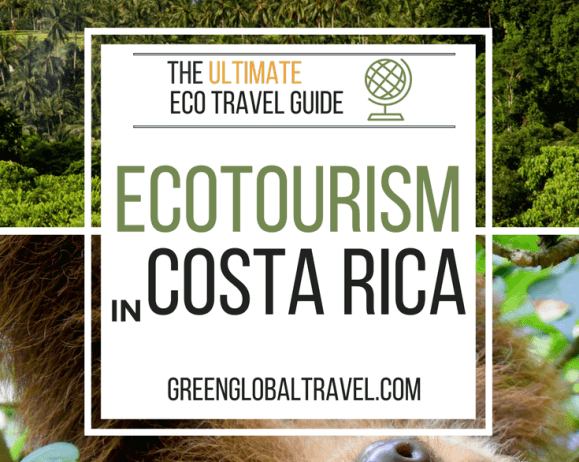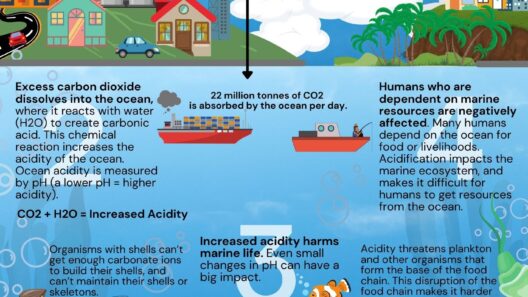Costa Rica, often heralded as a paragon of ecotourism, stands at a critical juncture as global warming increasingly imperils its natural beauty. With its lush rainforests, stunning coastlines, and remarkable biodiversity, the nation has positioned itself as an ideal destination for environmentally conscious travelers. However, climate change poses a formidable threat to these ecosystems, requiring urgent attention to preserve the very allure that attracts millions of visitors each year.
Ecotourism, characterized by low-impact travel to natural areas, aims to foster an appreciation for local flora and fauna while promoting conservation efforts. In Costa Rica, this sector has flourished, contributing significantly to the nation’s economy and encouraging sustainable practices among local communities. Visitors can partake in various activities, including wildlife observation, hiking through cloud forests, and exploring pristine beaches, which offer unique interactions with the environment.
Nevertheless, the detrimental effects of global warming are becoming increasingly apparent. Rising temperatures lead to altered precipitation patterns, threatening the delicate balance that sustains Costa Rica’s ecosystems. The implications for wildlife and plant species are profound, with many inhabitants unable to adapt to the rapid changes in their habitats. This disruption not only endangers the intrinsic value of biodiversity but also jeopardizes the ecotourism industry itself.
One of the most significant concerns is the burgeoning fragility of Costa Rica’s biodiversity hotspots. The country is renowned for its extensive network of national parks and reserves, which are home to an astonishing array of species. However, as climate change accelerates, the habitat suitable for various species gradually diminishes. For instance, amphibians are particularly vulnerable, with many species facing extinction due to increased temperatures and diseases exacerbated by changing climates. The loss of these species diminishes the ecological richness that draws ecotourists, creating a dangerous feedback loop.
Moreover, the iconic cloud forests—breathtaking ecosystems shrouded in mist—are on the verge of collapse. These environments, critical for carbon sequestration and water regulation, are suffering from increased drought frequency and intensity. The delicate ecosystems that thrive in these habitats are dependent on specific climatic conditions, and any deviation can lead to unpredictable and catastrophic consequences. The resulting die-off of native trees and plants compromises the entire ecology and endangers the wildlife that relies on these forests for survival.
Coastal regions in Costa Rica also face an existential crisis. Rising sea levels threaten to inundate pristine beaches and coastal habitats, disrupting not only the natural landscape but also the livelihoods of local communities dependent on tourism. Coral reefs, which are vital for preserving marine biodiversity, are particularly susceptible to ocean warming and acidification. The degradation of these ecosystems impacts marine life—including endangered turtles and other iconic species—reducing the spectacular sights that draw divers and ocean enthusiasts from across the globe.
As ecotourism flourishes, the strain on resources intensifies, raising concerns about sustainable practices and environmental stewardship. The paradox of promoting enhanced visitor numbers while safeguarding natural wonders leads to critical discussions surrounding responsible tourism. Increasing awareness among travelers about their environmental footprint is essential. Through educational programs, ecotourism operators must emphasize the significance of sustainable practices to minimize negative impacts on the environment.
Costa Rica’s response to these multifaceted challenges merits attention. Initiatives aimed at climate resilience are paramount. The government, NGOs, and local communities are collaborating to implement adaptive measures designed to protect vulnerable ecosystems. Strategies include reforestation programs, the establishment of wildlife corridors, and the promotion of environmentally sound agricultural practices that prioritize sustainability over short-term profits.
Furthermore, regulatory frameworks are being utilized to limit development in ecologically sensitive areas. Striking a balance between economic growth and conservation is not merely an ideal but a necessity. By fostering agreements with local communities, ecotourism stakeholders can create an integrated approach that respects both the environment and the cultural heritage of the region.
Local communities, often on the frontlines of environmental change, play a crucial role in conservation efforts. When residents benefit from ecotourism, they become willing stewards of their natural surroundings. Initiatives that involve local populations in conservation, such as ecotourism cooperatives, empower them to protect their ecosystems while receiving financial incentives. This collaborative model can form the backbone of sustainable practices, ensuring that economic benefits are equitably shared and that environmental integrity is upheld.
In conclusion, as Costa Rica grapples with the existential threats posed by climate change, the future of its ecotourism hinges on its ability to adapt and evolve. The nation’s rich biodiversity and pristine landscapes must be protected through immediate and concerted efforts. Travelers can play an instrumental role by supporting ecotourism initiatives that align with sustainability principles. With collective action and genuine commitment to preserving the environment, Costa Rica can continue to inspire a global audience, serving as a model for ecotourism and conservation in an increasingly unpredictable climate.








